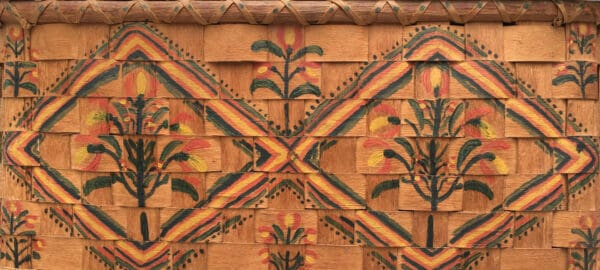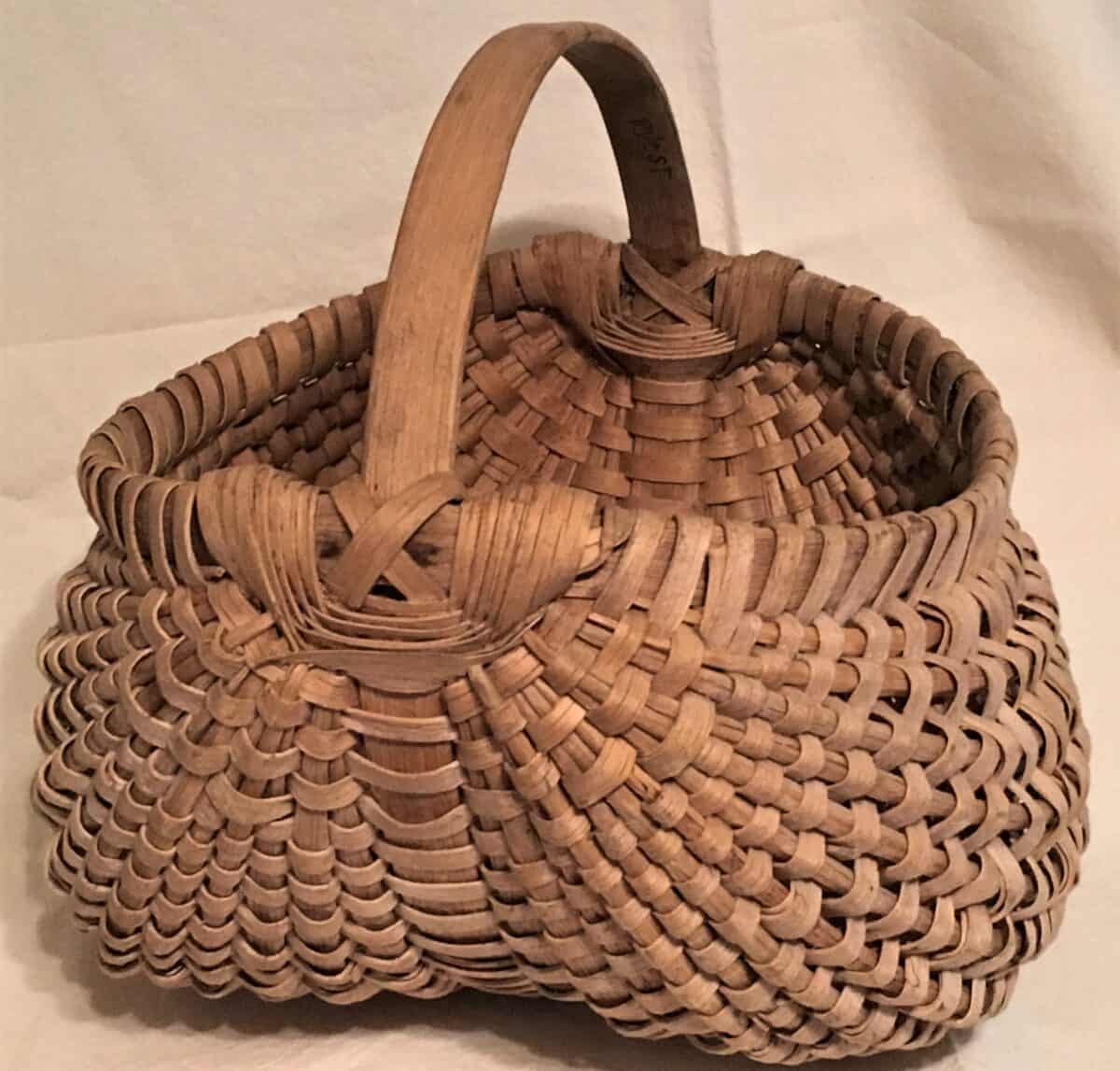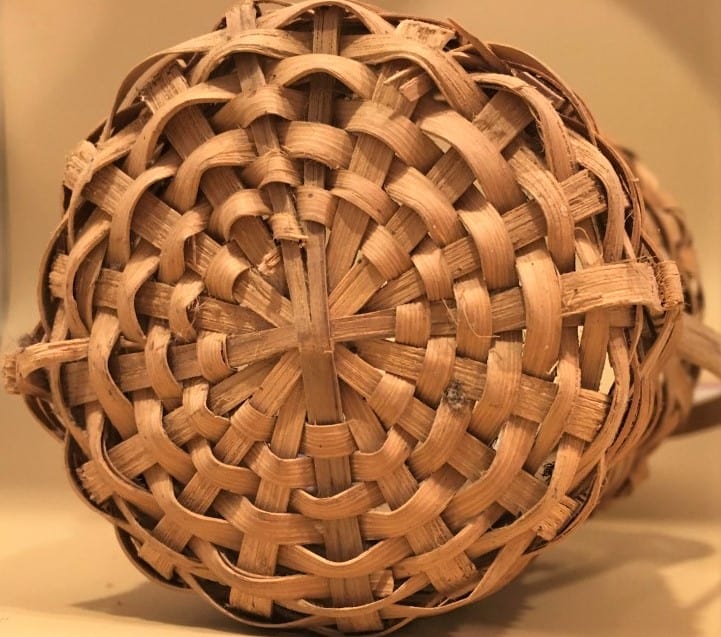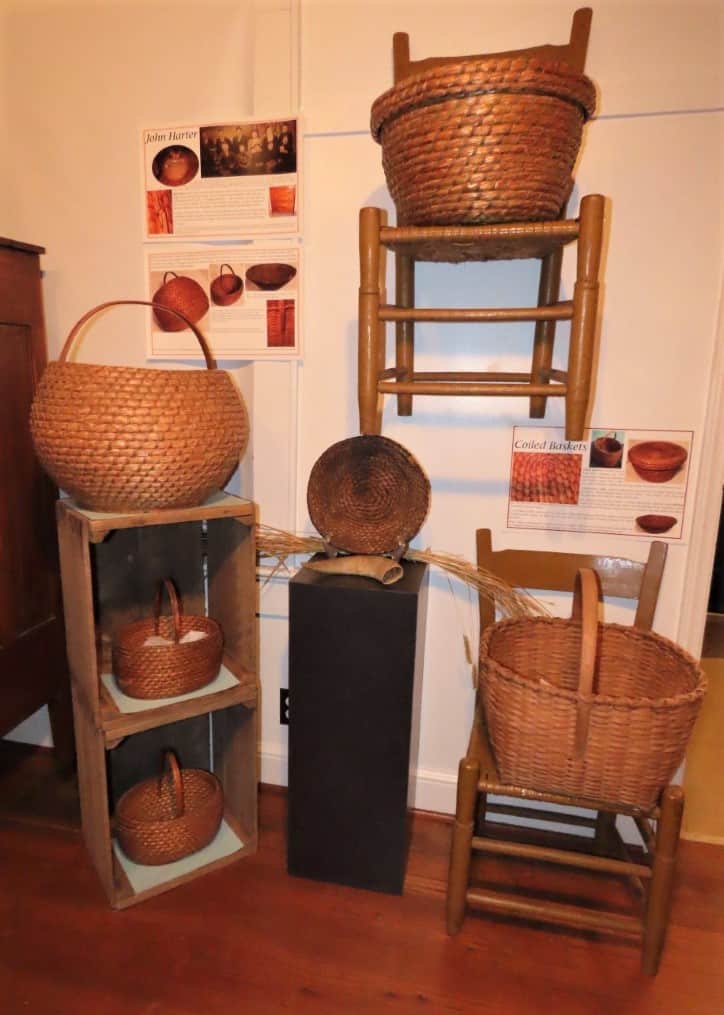“What Do We Need to Carry?” Basket Exhibit
Our 2018 exhibit featured the work-a-day baskets of four Floyd County master weavers: John Harter, Iowa Griffith Cockram Haynes, Charlie Hylton, and Clovis Boyd. On display were a variety of basket materials and styles from the hands of contemporary and traditional local basket makers.





“What Do We Need to Carry?” Baskets from Floyd County Makers
The Old Church Gallery gained national recognition for our 2018 exhibit showcasing four outstanding Floyd County basket makers, Clovis Boyd, John Harter, Iowa (Griffith) Cockram Haynes, and Charlie Hylton. This major exhibit featured baskets from over a dozen county basket makers, farmers and homemakers, along with their stories. Contemporary basket maker Carol Patch, visited the exhibit and was inspired to submit this article for the National Basketry Organization Magazine, “’What Do We Need to Carry?’ Functionality & Floyd County Heritage Baskets Exhibit.” Roddy Moore, Director Emeritus, Blue Ridge Institute, featured the Old Church Gallery and Iowa Haynes’ baskets in “Native Basket Styles Return,” October, 2023, for Early American Life magazine.


Charles Henry Hylton (1862-1951) became the basket and chair maker for families in the Union community near Buffalo Mountain. Most areas in Floyd County had at least one especially skilled person who supplied neighbors with baskets and chairs. Charlie’s white oak baskets were valued for their finely whittled ribs, densely woven splits, and symmetrical shapes. He also added a secondary rim to his baskets, as shown here, which gave them a more finished look in addition to making them sturdier. See Charlie Hylton exhibit poster here.

Iowa Griffith Cockram Haynes (1869-1964) grew up near Woolwine, Virginia. Her family, and especially her father, Tyler Griffith, was known for making white oak chairs. Iowa and her sisters wove the split seats for many of these chairs. As a widow living in the Hay Cocks section of Floyd County, Iowa supported herself by selling painted split baskets she made from pounded white ash. Her neighbor, Lucille Thomas Nolen, recalled watching Iowa use a maul to beat small saplings until she could peel splits from them. She also described how Iowa made brushes from twigs and used zinc canning jar lids to hold her paints. See Iowa Griffith Cockram Haynes exhibit poster pages here.

Clovis Dexter Boyd (1912-1988) learned the craft of basket making from his father, Dillard Boyd. He married Roxie Gallimore and wove a beautiful bassinet for their first child. Supporting the family as a carpenter, Clovis gave up basket making until retirement in 1974, when Roxie encouraged him to start making baskets again. His skill in making weaving splits, shaping ribs and handles from carefully selected, white oak trees, and the perfected construction of his egg baskets, led to him to become known as a master basket maker. He accepted invitations to demonstrate his craft at the 1982 World’s Fair in Knoxville, Tennessee and later at a Smithsonian Folklife Festival in Washington, D.C. The baskets of Clovis Boyd are also represented in the 1991 book, “Appalachian White Oak Basketmaking.” See Clovis Boyd exhibit poster pages here.

John Harter (1825-1909) supported his family by making baskets and furniture in addition to farming. A Civil War veteran, John had lost a leg after fighting at Chickamauga, and the home skill of basket making proved provident. John Harter wove white oak split baskets but also made baskets from coiled straw. He used very thin splits to bind rye straw roping together, working from the bottom up. Some of his baskets have beautifully carved handles and wooden feet while others have woven lids. This style of basketry was brought to Appalachia by German settlers and very few of these baskets are known to exist today. See John Harter exhibit poster pages here.


More views of the 2018 Basket Exhibit

A visitor favorite in the 2018 basket exhibit was a novelty bottle cap basket (pictured) purchased at the estate sale of Rural Shortt. His father, David Shortt, operated a country store near the Parkway. As 1930s rural electrification led to coolers in stores, patrons could purchase icy-cold, RC Colas after walking a couple of dusty miles.
The maker, from the Shortt family, collected about 650 bottle caps for this sizeable basket, punching center holes in each and securing them together with a stout, flexible wire. The basket’s base is a flattened tin container cover, eased in with rim cuts. The basket’s bottle cap side sections are in loops of bottle caps built upwards, in units of five, to form a fancy openwork design.



